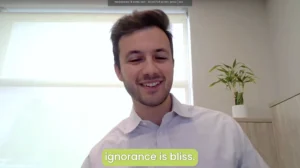9 Proven User-Generated Content Strategies That Actually Work

User-generated content has become the backbone of modern marketing—but most advice focuses on theory rather than execution. We asked nine marketing leaders who’ve built successful UGC programs to share exactly how they do it, what works, and what doesn’t.
Here’s what we learned from their real-world experience.
Start With Direct Customer Outreach
Kyle Bernard, who owns Radiance Pools, has perfected the art of the simple ask. His approach strips away all the complexity that usually surrounds UGC campaigns.
“Right after a pool install or a remodel, I’d say, ‘Hey, if you’re up for it, I’d love to share a photo of your pool on our page—maybe even one with you enjoying it,'” Kyle explains. “Most folks were flattered. Some even sent over videos, cocktails in hand, kids cannonballing in the background. It was real, it was joyful, and it worked.”
Kyle’s key insight challenges conventional wisdom: “Don’t overthink it. People connect with people, not polished posts. Just ask your customers for a quick pic or review—text, video, anything. Make it feel like a conversation, not a campaign. That authenticity does more than any ad I could’ve paid for.”
The Strategy: Personally ask satisfied customers to share their experience immediately after service completion, when satisfaction levels are highest.
Minimize Submission Friction
Alec Loeb, VP of Growth Marketing at EcoATM, has built their UGC program around eliminating every possible barrier to participation.
“We run UGC campaigns that prioritize real phone trade-ins with minimal editing,” Alec says. “Our best-performing content comes from customers explaining how fast they got paid. We don’t script. We keep the lighting natural. We use vertical formats that match where people already share.”
The key to their success lies in the submission process: “Customers can send us their videos without needing to log in or follow extra steps. We include short text CTAs on our receipts and emails that invite them to participate. That’s where most of our submissions come from. The cost is low, and the reach is measurable.”
The Strategy: Create multiple touchpoints for UGC requests and remove all technical barriers to submission.
Leverage Success Stories for Social Proof
Doug Crawford, President and Founder of Best Trade Schools, discovered that student success stories create powerful credibility without additional marketing spend.
“I initiated a simple hashtag campaign, requesting the graduates to post how vocational training assisted them in finding a job,” Doug explains. “The stories have been a goldmine when it comes to demonstrating real-life success and establishing credibility without incurring an additional expense.”
His approach creates a community effect: “A possibility to appear on a blog or social media post can encourage the graduates to interact. It makes it feel like a community and it motivates others to share making your brand have real user-generated content which says a lot.”
The Strategy: Focus on transformation stories that demonstrate clear before-and-after results from your product or service.
Place UGC at Decision Points
James Myers, Sales Director at VINEVIDA, has moved beyond social media to embed UGC directly into the customer purchase journey.
“Most of the buying decisions occur while someone is actively engaging with your site, reading product details, opening a cart reminder or browsing a post purchase email,” James notes. “So if you feature real customer photos or quotes in those instances, you are adding credibility without having to create more copies.”
His lavender essential oil page provides a perfect case study: “A customer sent us a photo of custom-made candles that she made with our oil during the bridal shower of her sister. She posted how the smell stood out throughout the occasion and that several visitors asked her about the recipe and where it came from. We put that very photo and her quote directly under the product description and the Add to Cart button. Since its inclusion, that section has attracted better click-through rates and increased conversions by more than 20 percent.”
The Strategy: Integrate customer photos and testimonials directly into high-intent pages like product descriptions, checkout flows, and cart abandonment emails.
Turn Conversations Into Content Assets
Josiah Roche, Fractional CMO at JRR Marketing, has built a systematic approach to converting customer interactions into marketing material.
“Anytime someone commented, tagged, or mentioned the brand, it wasn’t just reposted—it became the start of a dialogue,” Josiah explains. “That back-and-forth led to new content ideas because their words became the proof point. Screenshots turned into posts. Posts sparked more replies. Over time, that feedback loop built trust through consistency and relevance.”
His content creation process is remarkably efficient: “Instead of asking people for testimonials, I shared behind-the-scenes processes or results in public. That kind of transparency invited reactions. So if someone said, ‘this helped me land a client,’ that became the next post’s hook. If they asked a question, it became the headline. Within weeks, most content came directly from real interactions.”
The Strategy: Use customer comments and interactions as source material for new content that generates additional engagement and social proof.
Optimize UGC for Search Performance
Simon Brisk, Founder of Click Intelligence, has developed a systematic approach to using UGC for SEO benefits while building social proof.
“We leveraged UGC and boosted SEO on a tight budget by adding customer Q&As and photo reviews to product pages,” Simon explains. “The UGC brought in is optimized with fresh keywords and content that search engines quickly pick up.”
His results speak for themselves: “It increased review volume, and five product pages hit the first two pages on SERPs for competitive keywords in under three months.”
The collection strategy is straightforward: “We ran a simple ‘review of the month.’ We offered discount incentives and shoutouts across our socials.”
The Strategy: Structure customer reviews and Q&As to include relevant keywords and place them on product pages for both conversion and SEO benefits.
Create Clear Participation Guidelines
Evan Tunis, President of Florida Healthcare Insurance, emphasizes the importance of specific, actionable calls-to-action in UGC campaigns.
“One of the suggestions on brands that are embarking on user-generated content is to develop a powerful call-to-action,” Evan advises. “Ask your audience to write about their experiences and their opinion and do not make it difficult for them to write by giving instructions or a say to them.”
He recommends creating engagement mechanisms: “You can think of something to help your audience communicate even more with UGC, and this can be hashtag or competition. So, the presence of a good CTA can be revolutionary in terms of using UGC as a part of your marketing plan.”
The Strategy: Develop specific, easy-to-follow calls-to-action that give customers clear direction on what to share and how to share it.
Maximize Distribution Through Owned Channels
Valentin Radu, CEO & Founder of Omniconvert, focuses on strategic distribution of UGC across owned marketing channels.
“My method of integrating user-created content into a plan—especially when budgets are tight—is grounded in innovation and focus,” Valentin explains. “UGC doesn’t require extravagant assets to make an impact; what it truly needs is genuineness and smart distribution.”
His process begins with identification: “I’ve effectively utilized UGC by transforming satisfied customers into enthusiastic promoters. This starts by spotting those genuine moments where customers are already engaging—like praising social media posts, heartfelt testimonials, or even candid snapshots of them using your product.”
The distribution strategy leverages owned media: “With limited means, I rely on owned platforms such as email newsletters, product landing pages, and unpaid social shares to extend UGC’s reach. This approach not only minimizes expenses but also strengthens trust since people believe other people more than they trust companies.”
The Strategy: Identify authentic customer moments and amplify them through email, website, and organic social channels rather than paid promotion.
Partner With Relevant Micro-Influencers
Maksym Zakharko, Chief Marketing Officer and Marketing Consultant, has refined an approach to influencer partnerships that prioritizes audience alignment over follower count.
For a boutique beauty salon campaign, Maksym’s team took a data-driven approach: “We looked at the salon’s Instagram followers and customers who had booked services online. Using tools like Modash and Instagram Insights, we identified which public accounts they followed and engaged with regularly.”
Their targeting focused on micro-influencers: “We found a few local wellness bloggers, skincare enthusiasts, and even fitness instructors who had strong engagement with our audience, though they weren’t big names. Their content felt authentic, and they weren’t overloaded with sponsorships.”
The campaign structure combined gifting with content creation: “We gifted services (e.g., facials, microneedling) and asked for UGC-style content. The influencers shared their experience across Stories and Reels, tagged the salon, and provided short testimonials we later repurposed in Meta Ads.”
Results exceeded expectations: “3 out of 5 influencers generated more than 20 bookings each within two weeks. Instagram profile visits jumped by 300% during the campaign. Their UGC performed better in ads than studio-shot creative, driving a 27% lower cost per lead.”
The Strategy: Analyze your existing customer base to identify micro-influencers who already have your audience’s trust, then create authentic partnership opportunities.
Implementation Framework
Based on these expert insights, here’s a practical framework for implementing UGC:
Phase 1: Foundation
- Identify your happiest customers and most engaging customer moments
- Create simple, friction-free methods for content submission
- Develop clear calls-to-action that specify what you want and how to submit
Phase 2: Strategic Placement
- Integrate UGC into high-intent pages like product descriptions and checkout flows
- Use customer conversations as source material for new content
- Optimize customer reviews and Q&As for both conversion and SEO
Phase 3: Amplification
- Distribute UGC through owned channels like email and website
- Create engagement loops where UGC generates more UGC
- Consider strategic micro-influencer partnerships based on audience analysis
The most successful UGC programs share common characteristics: they’re built on genuine customer satisfaction, they remove barriers to participation, and they place social proof where purchasing decisions happen. Start with one strategy, measure results, and expand from there.





